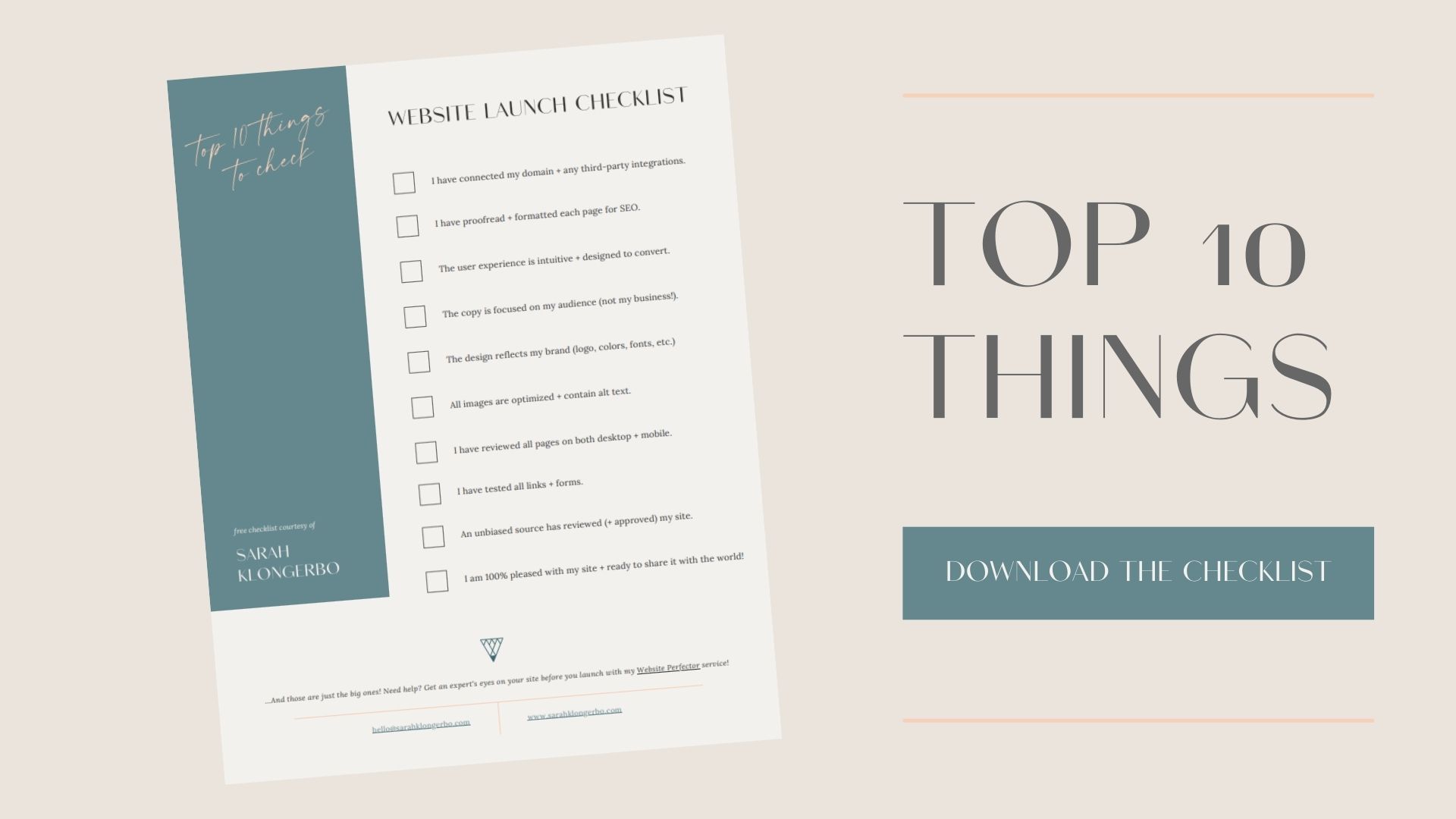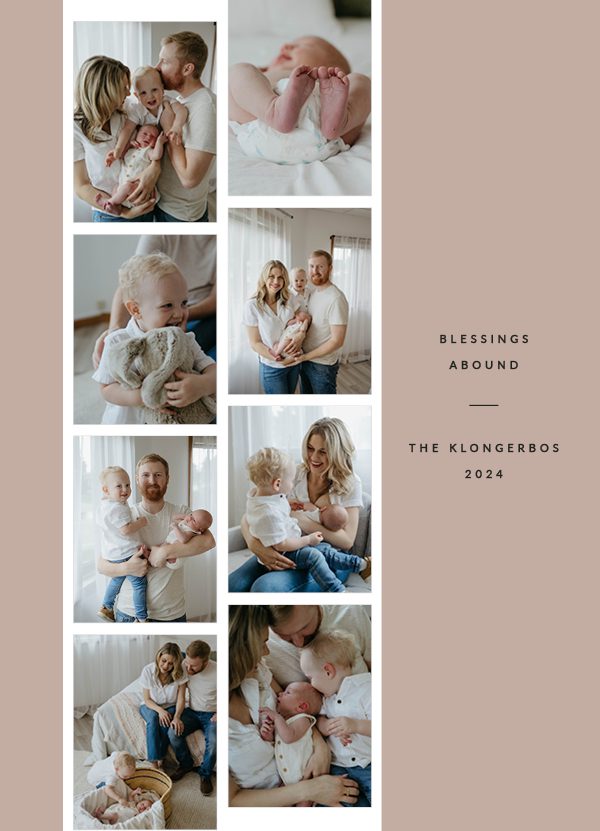
Why + How to Launch Your First Freebie (+ EXACTLY How I Did It!)
Launching a freebie can seem a little intimidating, but it doesn’t have to be.
Here’s how I’ve done it (as a self-admitted “freebie newbie”) — and why you may want to create a free opt-in of your own.
Table of Contents
- What Is a Freebie?
- Common Types of Freebies
- Why Create a Freebie?
- 3 Best Practices to Create an Irresistible Freebie
- How I Made My First Freebie
- Helpful Resources
All About Freebies (AKA Opt-Ins AKA Lead Magnets)
What Is a Freebie?
A freebie is exactly what it sounds like: a free bee. 💸 🐝
🥁
🦗 🦗
Okay, it’s not a bee, and that was extremely un-funny. Sorry.
But, a freebie is a free, “buzz-worthy” piece of content that attracts people to your website and tempts them to give you their email address in exchange for something they value.
In the digital marketing world, freebies are sometimes called opt-ins, lead magnets, or irresistible offers. I’m using the term freebies because it’s fun to say, but the point is actually to not think of this as a “marketing term” at all.
In fact, marketing has sort of ruined the whole concept.
Talk to different online business owners, and they’ll give you different takes on the practice of offering freebies. Some think they’re the single best way to generate new, quality leads. Some think they’re hackneyed and dead.
My take? As long as you are truly keeping the desires and pain points of your audience in mind, your free content — whatever you choose to call it — can only help your contacts (and you).
Your contacts get the cool, free thing they signed up for. You get their email address, which you can then use to share with them even more cool, free (and, eventually, non-free) things.
Win-win!
What Are Some Common Types of Freebies?
So, what does a freebie actually look like?
There are practically endless ways you can create and distribute free content in the form of a lead magnet, but here are a few of the most common types of freebies:
- Guides or ebooks (like this one)
- Worksheets or workbooks
- Checklists
- Cheat sheets
- Toolkits or resource lists
- Templates
- Video or audio trainings
- Quizzes
- E-courses
- Email challenges (like this one)
- Kits or bundles
- Access to an exclusive community
- Discount codes
Basically, anything your audience might find helpful — which you can somehow package and send to their email address — could make for a fabulous freebie.
In fact, as lead magnets continue to saturate the online market, the more creative you can get with your opt-in, the better.
Why Create a Freebie?
One thing digital marketers don’t tend to debate is the value of an email list.
Especially in this current era of privacy concerns, tracking limitations, and iOS 14 crap, it’s more important than ever to (safely) control your own contact data.
After all, you don’t want to put all your eggs in the Facebook basket.
When someone has agreed to give you their email address, you now hold that basket — and no one can take it away from you. (Except, of course, the people who own those emails.) 😂
I could go on about the advantage of possessing a quality email list for ad targeting purposes, but the real value isn’t in playing some sort of “get out of jail free” card when Apple releases a new tracking update.
The real value is in the connection that an email list helps you cultivate.
If someone has given you their email address, they’ve granted you access to a private place in their personal life, where they (typically) spend more intentional time than, say, scrolling through Instagram before bed.
That’s a big deal!
Because you’re able to connect with your audience on a deeper level — and thus have a better potential of converting them into customers — through email than through any other marketing channel, capturing quality email addresses is key to your success as a business owner or online marketer.
Emphasis on quality, BTW. You don’t want just any email address here. If someone isn’t at least on the periphery of your target audience, you probably don’t need to spend time creating content that caters to their needs.
But you do need to spend time creating content that caters to your ideal client or customer’s needs.
That’s exactly what a good freebie does.
Over time, your freebie will hopefully generate enough emails that you’ll have a solid database of potential clients whom you can continue to serve weeks, months, and even years down the road.
How to Create Your First Freebie
3 Best Practices for Creating an Irresistible Freebie
Emphasis on irresistible. Because if it’s not, no one — let alone your ideal customers — will actually download it.
People are protective over their emails, after all. So you’d better give them a darn good reason to let you near those inboxes!
Here are a few best practices to keep in mind when creating an irresistible offer:
- Work backward from your end goal.
- What does your business sell? Your freebie should be directly related to your products or services, or you’re going to attract the wrong kind of leads. Make sure your offer is truly relevant to the type of person you really want to purchase from your business.
- What does your business sell? Your freebie should be directly related to your products or services, or you’re going to attract the wrong kind of leads. Make sure your offer is truly relevant to the type of person you really want to purchase from your business.
- Solve your customer’s problem.
- What are some common pain points for your audience? Pick one (yes, just one), and actually fix it in the form of your freebie. People aren’t going to opt in if you don’t promise them actual value. Plus, by giving them a quick win, you’ll earn their favor, trust, and business faster.
- What are some common pain points for your audience? Pick one (yes, just one), and actually fix it in the form of your freebie. People aren’t going to opt in if you don’t promise them actual value. Plus, by giving them a quick win, you’ll earn their favor, trust, and business faster.
- …But don’t solve the whole problem.
- How much value can you provide without giving away the farm? Remember, the ultimate point of an opt-in is to get people to buy from you. If you firehose them with too much information right off the bat, they’ll a) get overwhelmed and leave, or b) take the info and run. You want to give them just enough value that they keep coming back to you for more.
How I Made My First Lead Magnet: My 10-Step Website Launch Checklist
Okay, so what does the process of creating and launching a freebie actually look like?
Here’s what I did (and what I might recommend you do, too… though I hope you do #9 better than I did!):
1. Brainstorm a List of Lead-Generating Content
One end goal for my business is designing websites for creative entrepreneurs and small businesses, so I thought about pain points they might have and made a list of content ideas (+ formats) based on those.
Since most clients I’ve worked with don’t have a lot of experience with website design, many of my ideas were related to educating them on that process.
2. Start with the Easiest + Most Relevant Idea
While there were so many different opt-ins I could have created (and still can!), I knew I needed to just get one out there, so I could start collecting email addresses and gathering feedback.
I decided to go with a one-page checklist sharing my top 10 tips for an effective website — which is not only helpful for my potential clients, but also simple for me to make!
3. Draft the Content
I could have made my checklist 10 pages long, but I knew I needed to keep it manageable, or readers would bolt.
After writing down all the possible website launch tips I could have included, I narrowed it down to the top 10 that I knew would make the most impact on a client’s website.
I based the content on my own experience as a web designer and digital marketer, but I also did a little online research to make sure I was including the best recommendations from industry leaders as well.
4. Design the Freebie
To save time, I used a template from Canva to create my checklist.
As a designer, I understand Canva isn’t the most “bespoke” way to create, but as an entrepreneur, I also know it’s the easiest — and when we’re strapped for time, simple is best, right? Plus, since I pay for Canva Pro, I was able to add my brand colors and fonts to customize my design even more.
Once I was pleased with the design, I simply downloaded it as a single-page PDF and saved it to my laptop.
5. Create an Opt-In Landing Page
Next, I went to ConvertKit, my email marketing platform, to create a landing page for my lead magnet.
Since my Website Launch Checklist is pretty self explanatory, I didn’t add a lot of copy to this page; I kept it short and sweet, like the checklist itself.
I then adjusted all the landing page settings, including the most important part: the follow-up email that actually delivers the offer.
Pssssst: If your landing page builder doesn’t allow you to create an automatic follow-up email at this step, be sure to create some sort of automation so that your leads actually receive the freebie you promised them!
6. Create an Embeddable Form
Along with a landing page, I knew I would want a form or two that I could embed on other pages of my website, so people could download the freebie right away instead of being sent to a separate page.
Again, I used ConvertKit templates for these forms, adding a bit of custom code so that the forms would retain my branding.
7. Create an Image for Social Sharing
Since I knew I would be sharing the landing page on social media, I wanted to make sure the featured image would look good on those platforms.
So, I went back to Canva to create an image that:
- Was perfectly sized for Facebook, Twitter, and LinkedIn, and
- Featured the most important graphic elements for a social sharing image: a screenshot of the checklist, the words “Top 10 Things” in large font to grab attention, and a fake “button” encouraging people to download the checklist.
8. Add the Freebie to the Website
Now, I was finally ready to start sharing the freebie!
I began with my website, adding a “Free Checklist!” link to my pop-out menu and footer. I also embedded a form in my blog sidebar at the left of individual blog posts.
I even created a pop-up message, shown to visitors on my home page, for extra visibility.
9. Promote the Freebie
…Okay, here’s where everything came crashing down. 😆
Just kidding — it wasn’t that bad, but I definitely did not see a lot of traction within the first week or so of sharing my freebie.
To be fair, I didn’t have much of a promotional strategy going into this. I mostly just wanted this opt-in to be ready for potential future clients, not necessarily my current network (which, let’s face it, is largely still friends + family).
Still, I got zero downloads when I shared my checklist on LinkedIn, and I didn’t even bother to share it on my personal Facebook or other social accounts. (I figured if it’s not relevant to a professional audience on LinkedIn, it’s probably not too relevant to aunts + uncles on the ‘Book.)
I did have a little success when sending the checklist to my email list… although, you know, those people were already on my email list!
Finally, when I started sharing the checklist on various Facebook groups I’m part of, I did begin to see some actual downloads (from people who aren’t related to me — woop woop!).
It’s an important marketing lesson: the medium matters as much as the message.
Now, I intend to do some more of that type of posting — and to continue to share it via other outlets (like this blog post!).
Especially since this particular resource is pretty evergreen (+ easy to update if needed), I hope it will be useful for years down the road… for me and my audience.
After all, the whole point is to serve them (you?).
So, even if I ever get only 25 downloads from this opt-in, as long as it’s helpful for those people (and they’re people who would make great clients)… well, I’d rather have that than 25,000 downloads from random looky-loos, anyway.
Helpful Resources for Launching Your First Freebie
That’s all just what I did, of course. I’m sure there are many other ways to approach the freebie process — so do whatever works best for you!
If you’re looking for more help in creating and launching your first freebie, here are a few useful resources I’d recommend:
- Canva
- Graphic designers, look away. It’s no Adobe product, but Canva really is a powerful little tool for quickly (yet professionally) designing almost any type of graphic you can imagine.
- Graphic designers, look away. It’s no Adobe product, but Canva really is a powerful little tool for quickly (yet professionally) designing almost any type of graphic you can imagine.
- ConvertKit
- True to its name, ConvertKit includes everything you need to attract and convert your audience, from sign-up forms to landing pages to automated email marketing. After a lot of research into email marketing platforms, I chose ConvertKit for its clean design features, authentic community of creators, and free pricing plan for up to 1,000 subscribers.
- True to its name, ConvertKit includes everything you need to attract and convert your audience, from sign-up forms to landing pages to automated email marketing. After a lot of research into email marketing platforms, I chose ConvertKit for its clean design features, authentic community of creators, and free pricing plan for up to 1,000 subscribers.
- Leadpages
- Although there’s some overlap in features between ConvertKit and Leadpages, the former is focused on email marketing, while the latter is focused on high-converting landing pages. I haven’t actually used Leadpages yet, but I know it’s an industry leader, and I’ve found its free resources helpful.
- Although there’s some overlap in features between ConvertKit and Leadpages, the former is focused on email marketing, while the latter is focused on high-converting landing pages. I haven’t actually used Leadpages yet, but I know it’s an industry leader, and I’ve found its free resources helpful.
- Amy Porterfield
- She’s the queen of email list building, so I’d be remiss not to mention her! I like Amy’s podcast, but she also offers endless content on email list building on her website.
- She’s the queen of email list building, so I’d be remiss not to mention her! I like Amy’s podcast, but she also offers endless content on email list building on her website.
- Jenna Kutcher
- …Or is she the queen of email list building? While Amy Porterfield is the guru for online course creators, Jenna Kutcher is the everygirl for entrepreneurs. Her podcast also made my list, but again, you’ll find lots more content on her site — such as her own “10 Ways to Grow Your Email List” freebie (snag it for inspiration!).
See a Freebie in Action: The 5-Day Web Copy Crash Course
Look, I’m not saying I have the freebie game figured out here. Not even close! (See step #9 again…)
But I do have dreams about the topics and types of content I want to offer in the future.
Here’s to you and I both getting better at our freebie game!
Postscript: Since writing this post, I’ve created a new freebie that I love even more than the checklist described here. It’s called the 5-Day Website Copy Crash Course, and it helps you write each of the five pages your website needs in order to convert your dream clients. Get started below!



Be the First to Comment